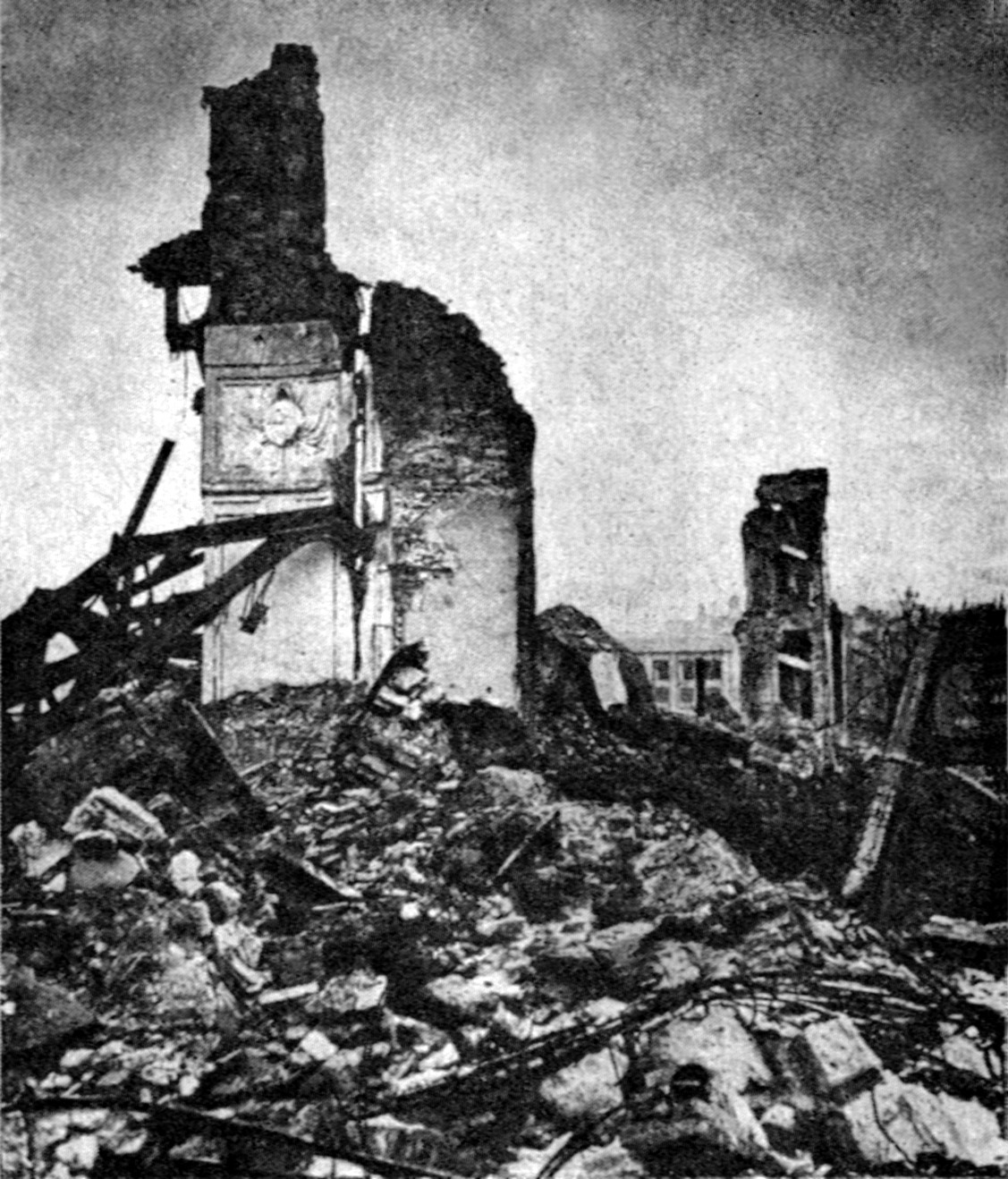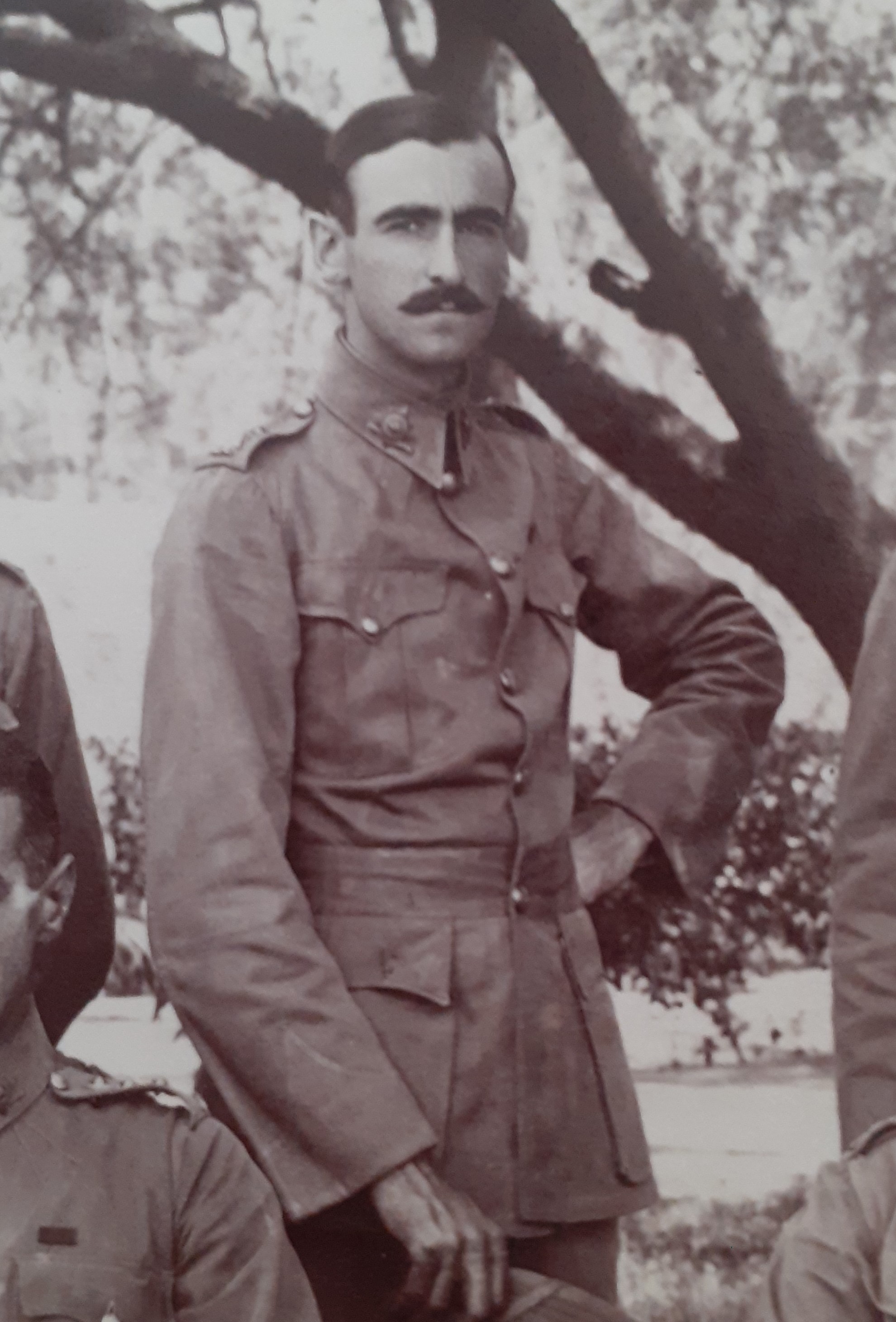|
Andrzej Ciechanowiecki
Andrew Stanislaus (Andrzej Stanisław) Ciechanowiecki (28 September 1924 – 2 November 2015), Dąbrowa Coat of Arms, was a Polish-British nobleman, diplomat, prisoner and agent of Communist Poland, economist, academic, art historian, philanthropist, art collector, antique dealer, antiquarian and exhibition curator. He was considered an authority on French baroque sculpture in the second half of the 20th century. He was founder of the Ciechanowiecki Foundation at the Royal Castle in Warsaw (1986), Honorary Professor of the Academy of Fine Arts in Warsaw, member of the Polish Academy of Sciences, Honorary Member or Life Member of many learned societies both British and Polish, FSA, member of the board of trustees of the Royal Castle in Warsaw, and member of the board of the Lanckoroński Foundation. He was also a council member of the Princes Czartoryski Foundation from its establishment until July 2011, the Raczyński Foundation, and the Polish Historical and Literary Socie ... [...More Info...] [...Related Items...] OR: [Wikipedia] [Google] [Baidu] |
Andrzej Okinczyc
Andrzej is the Polish form of the given name Andrew. Notable individuals with the given name Andrzej * Andrzej Bartkowiak (born 1950), Polish film director and cinematographer * Andrzej Bobola, S.J. (1591–1657), Polish saint, missionary and martyr * Andrzej Chyra (born 1964), Polish actor * Andrzej Czarniak (1931–1985), Polish alpine skier * Andrzej Duda (born 1972), Polish 6th president * Andrzej Jajszczyk, Polish scientist * Andrzej Kmicic, fictional protagonist of Henryk Sienkiewicz's novel ''The Deluge'' * Andrzej Kokowski (born 1953), Polish archaeologist * Andrzej Krauze (born 1947), Polish-British cartoonist and illustrator * Andrzej Leder (born 1960), Polish philosopher and psychotherapist * Andrzej Mazurczak (born 1993), Polish basketball player * Andrzej Mleczko (born 1949), Polish illustrator * Andrzej Nowacki (born 1953), Polish artist * Andrzej Paczkowski (born 1938), Polish historian * Sir Andrzej Panufnik (1914–1991), Polish composer * Andrzej Person, Po ... [...More Info...] [...Related Items...] OR: [Wikipedia] [Google] [Baidu] |
Warsaw
Warsaw ( pl, Warszawa, ), officially the Capital City of Warsaw,, abbreviation: ''m.st. Warszawa'' is the capital and largest city of Poland. The metropolis stands on the River Vistula in east-central Poland, and its population is officially estimated at 1.86 million residents within a greater metropolitan area of 3.1 million residents, which makes Warsaw the 7th most-populous city in the European Union. The city area measures and comprises 18 districts, while the metropolitan area covers . Warsaw is an Alpha global city, a major cultural, political and economic hub, and the country's seat of government. Warsaw traces its origins to a small fishing town in Masovia. The city rose to prominence in the late 16th century, when Sigismund III decided to move the Polish capital and his royal court from Kraków. Warsaw served as the de facto capital of the Polish–Lithuanian Commonwealth until 1795, and subsequently as the seat of Napoleon's Duchy of Warsaw. Th ... [...More Info...] [...Related Items...] OR: [Wikipedia] [Google] [Baidu] |
London
London is the capital and List of urban areas in the United Kingdom, largest city of England and the United Kingdom, with a population of just under 9 million. It stands on the River Thames in south-east England at the head of a estuary down to the North Sea, and has been a major settlement for two millennia. The City of London, its ancient core and financial centre, was founded by the Roman Empire, Romans as ''Londinium'' and retains its medieval boundaries.See also: Independent city#National capitals, Independent city § National capitals The City of Westminster, to the west of the City of London, has for centuries hosted the national Government of the United Kingdom, government and Parliament of the United Kingdom, parliament. Since the 19th century, the name "London" has also referred to the metropolis around this core, historically split between the Counties of England, counties of Middlesex, Essex, Surrey, Kent, and Hertfordshire, which largely comprises Greater London ... [...More Info...] [...Related Items...] OR: [Wikipedia] [Google] [Baidu] |
Konstanty Skirmunt
Konstanty Skirmunt (russian: Константи́н Ге́нрихович Ски́рмунт) (30 August 1866 – 24 July 1949) was a Polish politician. During 1907—1914 he was a member of the State Council of the Russian Empire. He was a member of the Polish National Committee in Paris in 1917–1918, Polish ambassador in Rome in 1919–1921, Polish Minister of Foreign Affairs in 1921–22, and Polish ambassador in London in 1919–1934. Decorations *1923: Order of Polonia Restituta of the 1st class ('' Wielka wstęga orderu Odrodzenia Polski'') *1926: Grand Cross of the Order of the White Lion (Czechoslovakia) *1932: Gold Cross of Merit *1936: Royal Victorian Order The Royal Victorian Order (french: Ordre royal de Victoria) is a dynastic order of knighthood established in 1896 by Queen Victoria. It recognises distinguished personal service to the British monarch, Canadian monarch, Australian monarch, o ... of the 1st class (Great Britain) References 18 ... [...More Info...] [...Related Items...] OR: [Wikipedia] [Google] [Baidu] |
Polesie Voivodeship
Polesie Voivodeship ( pl, województwo poleskie) was an administrative unit of interwar Poland (1918–1939), named after the historical region of Polesia. It was created by the Council of Ministers of the Second Polish Republic on February 19, 1921, as a result of peace agreement signed with the Russian and Ukrainian SSRs in Riga. Polesie Voivodeship was the largest province of interwar Poland. It ceased to function in September 1939, following the Nazi-German and Soviet invasion of Poland in accordance with a secret protocol of the Nazi–Soviet Pact of non-aggression. Demographics The provincial capital of the Polesie Voivodeship, and also the largest city was Brześć nad Bugiem (Brest-on-the-Bug) with some 48,000 inhabitants (1931). The province was made up of 9 powiats (counties), and had 12 substantial towns or cities. In 1921, the population of the province numbered 879,417, with a population density of about 20.8 persons per km2, the lowest in interwar Poland. By 193 ... [...More Info...] [...Related Items...] OR: [Wikipedia] [Google] [Baidu] |
Moładava
Moladava ( be, Моладава; russian: Молодово, Molodovo; pl, Mołodów) is a township in Ivanava District, Brest Region, Belarus Belarus,, , ; alternatively and formerly known as Byelorussia (from Russian ). officially the Republic of Belarus,; rus, Республика Беларусь, Respublika Belarus. is a landlocked country in Eastern Europe. It is bordered by .... History On March 11, 2011, presidential decree "On the establishment of official heraldic symbols of administrative-territorial and territorial units of the Brest region" adopted emblem and flag of the village. References External links Moładava at Radzima.org {{DEFAULTSORT:Moladava Populated places in Brest Region Brest Litovsk Voivodeship Brestsky Uyezd Polesie Voivodeship ... [...More Info...] [...Related Items...] OR: [Wikipedia] [Google] [Baidu] |
Adrian Carton De Wiart
Lieutenant-General Sir Adrian Paul Ghislain Carton de Wiart, (; 5 May 1880 – 5 June 1963) was a British Army officer born of Belgian and Irish parents. He was awarded the Victoria Cross, the highest military decoration awarded for valour "in the face of the enemy" in various Commonwealth countries. He served in the Boer War, First World War, and Second World War. He was shot in the face, head, stomach, ankle, leg, hip, and ear; was blinded in his left eye; survived two plane crashes; tunnelled out of a prisoner-of-war camp; and tore off his own fingers when a doctor declined to amputate them. Describing his experiences in the First World War, he wrote, "Frankly I had enjoyed the war." After returning home from service (including a period as a prisoner-of-war) in the Second World War, he was sent to China as Winston Churchill's personal representative. While ''en route'' he attended the Cairo Conference. In his memoirs, Carton de Wiart wrote, "Governments may think and say a ... [...More Info...] [...Related Items...] OR: [Wikipedia] [Google] [Baidu] |
German Invasion Of Poland
The invasion of Poland (1 September – 6 October 1939) was a joint attack on the Republic of Poland by Nazi Germany and the Soviet Union which marked the beginning of World War II. The German invasion began on 1 September 1939, one week after the signing of the Molotov–Ribbentrop Pact between Germany and the Soviet Union, and one day after the Supreme Soviet of the Soviet Union had approved the pact. The Soviets invaded Poland on 17 September. The campaign ended on 6 October with Germany and the Soviet Union dividing and annexing the whole of Poland under the terms of the German–Soviet Frontier Treaty. The invasion is also known in Poland as the September campaign ( pl, kampania wrześniowa) or 1939 defensive war ( pl, wojna obronna 1939 roku, links=no) and known in Germany as the Poland campaign (german: Überfall auf Polen, Polenfeldzug). German forces invaded Poland from the north, south, and west the morning after the Gleiwitz incident. Slovak military forces adv ... [...More Info...] [...Related Items...] OR: [Wikipedia] [Google] [Baidu] |
Gimnazjum I Liceum Im
''Gymnasium'' (and Gymnasium_(school)#By_country, variations of the word) is a term in various European languages for a secondary school that prepares students for higher education at a university. It is comparable to the US English term ''University-preparatory school, preparatory high school''. Before the 20th century, the gymnasium system was a widespread feature of educational systems throughout many European countries. The word (), from Greek () 'naked' or 'nude', was first used in Ancient Greece, in the sense of a place for both physical and intellectual education of young men. The latter meaning of a place of intellectual education persisted in many European languages (including Albanian language, Albanian, Bulgarian language, Bulgarian, Estonian language, Estonian, Greek language, Greek, German language, German, Hungarian language, Hungarian, the North Germanic languages, Scandinavian languages, Dutch language, Dutch, Polish language, Polish, Czech language, Czech, ... [...More Info...] [...Related Items...] OR: [Wikipedia] [Google] [Baidu] |
Mikołaj Rey
Mikołaj is the Polish cognate of given name Nicholas, used both as a given name and a surname. It may refer to people: In Polish (or Polish-Lithuanian) nobility: * Mikołaj Firlej (died 1526), Polish nobleman, Hetman, diplomat, and expert of south-east Europe * Mikołaj Kamieniecki, Polish nobleman and the first Grand Hetman of the Crown * Mikołaj Krzysztof "the Orphan" Radziwiłł, Polish-Lithuanian lord * Mikołaj Mielecki, Polish nobleman and politician * Mikołaj Ostroróg, Polish nobleman * Mikołaj Potocki, member of the Polish nobility, magnate, and the Field Hetman of the Crown * Mikołaj "the Black" Radziwiłł, noble of the Grand Duchy of Lithuania, Palatine of Vilnius, and Grand Chancellor of Lithuania * Mikołaj "the Red" Radziwiłł, Polish-Lithuanian lord, Palatine of Vilnius, Grand Chancellor, and Grand Hetman of Lithuania * Mikołaj VII Radziwiłł, Polish-Lithuanian lord, and Lord Grand Chamberlain of Lithuania * Mikołaj Sienicki, notable member of the lan ... [...More Info...] [...Related Items...] OR: [Wikipedia] [Google] [Baidu] |
Budapest
Budapest (, ; ) is the capital and most populous city of Hungary. It is the ninth-largest city in the European Union by population within city limits and the second-largest city on the Danube river; the city has an estimated population of 1,752,286 over a land area of about . Budapest, which is both a city and county, forms the centre of the Budapest metropolitan area, which has an area of and a population of 3,303,786; it is a primate city, constituting 33% of the population of Hungary. The history of Budapest began when an early Celtic settlement transformed into the Roman town of Aquincum, the capital of Lower Pannonia. The Hungarians arrived in the territory in the late 9th century, but the area was pillaged by the Mongols in 1241–42. Re-established Buda became one of the centres of Renaissance humanist culture by the 15th century. The Battle of Mohács, in 1526, was followed by nearly 150 years of Ottoman rule. After the reconquest of Buda in 1686, the ... [...More Info...] [...Related Items...] OR: [Wikipedia] [Google] [Baidu] |





